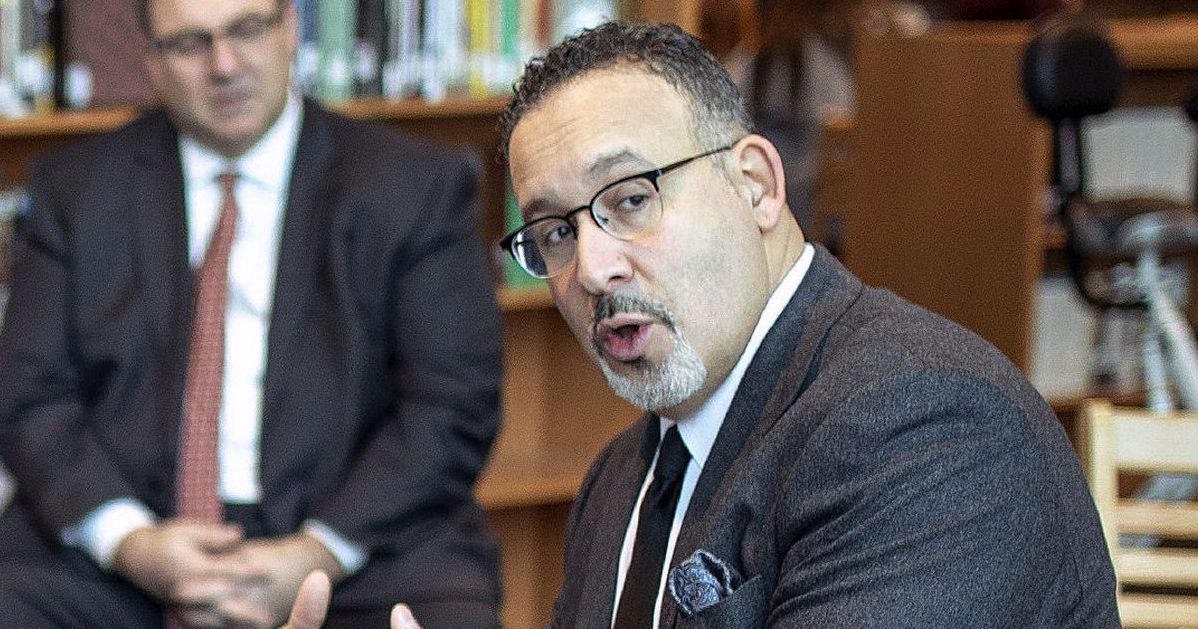How the Biden Administration May Affect Education

Biden Administration to Announce Miguel Cardona as Education Secretary
After weeks of waiting, we finally know who will replace Education Secretary Betsy DeVos. According to reports, President-Elect Biden is set to announce Miguel Cardona, who is currently serving as Education Commissioner in Connecticut. Biden previously stated that he would name a former schoolteacher to the position, and Cardona is exactly that. A former elementary school teacher, principal and superintendent, Cardona has a wealth of experience in education – specifically at the K-12 level.
Cardona, the son of immigrant parents from Puerto Rico, is a first generation college graduate as well as an English language learner; an experience that has shaped much of his work as Education Commissioner. He is also the product of a vocational education, something that has given Cardona perspective on alternative paths to education.
What does this mean for Higher Education?
Exactly how Cardona will impact higher education remains to be seen, but one thing is certain. The Biden administration will likely overturn many of the policies introduced by the Trump administration under the leadership of Secretary DeVos. We can make some educated projections about how these changes might look based on statements the Biden administration has made so far.
Increasing Accessibility and Affordability
Biden is a proponent of free public college. During his campaign, he released a “Beyond High School” education plan that included giving students up to two years of free community college. If enacted as written, this plan will also enable students to pursue non-degree training programs. Both new high school graduates and adults returning to education will be eligible. Biden’s education plan also includes making colleges and universities tuition free for families with incomes below $125,000.
Colleges and universities would likely experience some significant implications from the shift in student behavior this plan is likely to cause. First, the promise of a free tuition could entice more students to start their post-secondary education at community colleges. This could further reduce the traditional student undergrad enrollment numbers that have been creeping downward for years, with an accompanying restriction of that revenue stream.
Under these conditions, innovative four-year schools might need to build closer partnerships with community colleges. They might also reduce general education offerings and provide more streamlined programs. In general, this could present a huge challenger for small and mid-sized four-year schools that are already struggling to meet enrollment targets.
However, more people entering the workforce with an associates degree or some college means people likely to return as working adult students. This could accelerate the shift to higher online and non-traditional enrollment volumes. The programs that thrive under these conditions would be the ones that were designed with the needs of post-traditional students in mind. So shorter semesters, stackable credentials, and more flexible online programs could become the norm.
Another likely impact that the Biden administration will have is returning full-tuition paying non-US students with a hopeful end to COVID-19. This number dramatically decreased with tougher policies and due to the pandemic limiting international travel.
Student Loan Debt Deferment and Forgiveness
The Biden administration has also shown interest in alleviating the financial burden on students by expanding federal financial aid. By doubling the maximum value of Pell grants the administration hopes the program can serve more students. He has even said he would provide extra funding for colleges that serve Pell Grant students. This is another area where the Trump administration reversed Obama-era policies.
Forgiving student debt under the Public Service Loan Forgiveness Program will likely be a major focus of the Biden administration. It will also need to make some tough choices about how long to keep deferring student loan repayment. Student loan holders were given a reprieve during the pandemic. Early in December, Devos extended the order out to February 1. That means that the new administration will need to move quickly if it plans to extend that order again after Biden is inaugurated on Jan 20. In addition, the Biden administration will likely restore the Borrower Defense to Repayment Act, which will help borrowers defend against intentional school fraud.
If Biden continues his trend of reverting to Obama-era policies, we’re likely to see an increased focus on outcomes. Financial support for colleges is likely to be closely tied to the percentage of students that are able to find gainful employment. As a result, schools are likely to face more pressure on ensuring that students persist, graduate, and find that first job. To succeed, colleges and universities may need to increase their investment in career services and deepen relationships with employers.
Reducing the student loan burden may entice some former students to return to school to finish their degree. Again, this is likely to boost the number of post-traditional students in the enrollment mix. Schools could make a special effort to reach out to former students who did not complete and create programs or supports for students returning after some time away.
Finally, the Biden administration has pledged support for Historically Black Colleges and Universities. This could include forgiving loans for capital projects at HBCUs. The administration also wants to increase funding for HBCUss, Tribal Colleges and Universities, and other institutions that serve a disproportionate number of students of color or low-income students.
While it appears likely that Cardona’s first focus as Education Secretary will be on K-12 and getting students back to in-person learning during the pandemic, his impact and that of the Biden Administration will certainly be felt by higher education. At EducationDynamics, we will continue to stay attuned to the higher education landscape and help our partner institutions adjust to shifts so that they can best serve their students.